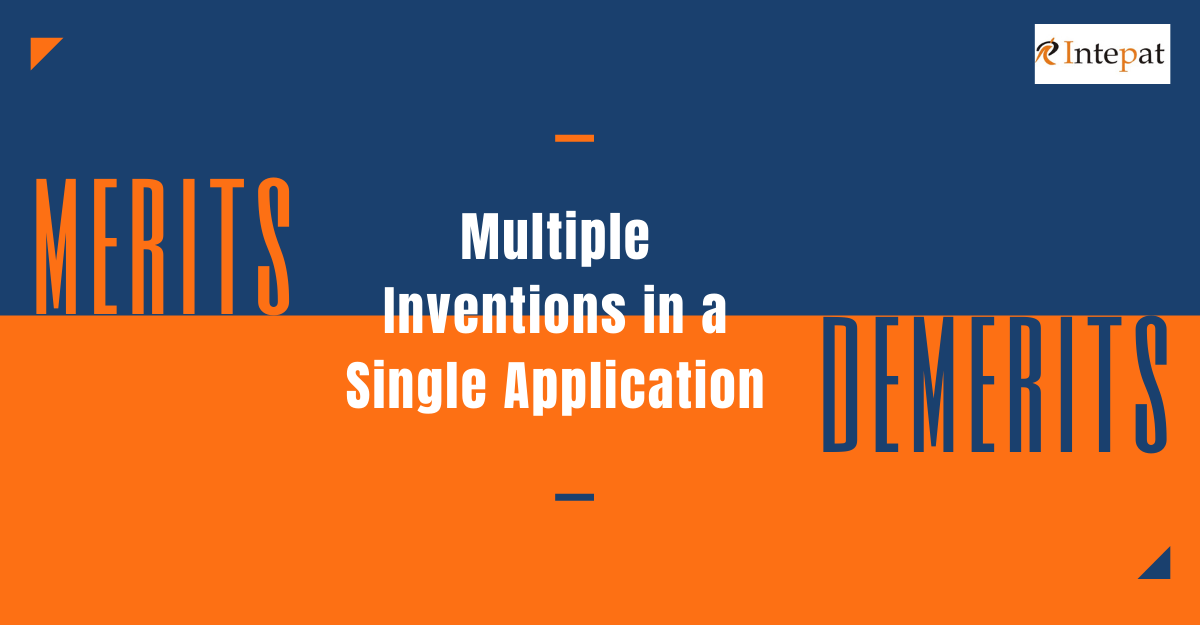There are two ways of filing a patent application for your inventions. First is a straightforward approach, and the second is a consolidated approach.
Straightforward Approach
Under the straightforward approach, if you have more than one invention, each invention is filed under a separate application. So basically, this means one invention, one application.
Consolidated Approach
Under the consolidated approach, multiple inventions are clubbed under a single application. This approach is also known as an omnibus specification. However, different inventions must be related to each other. One thing you have to keep in mind before filing a single patent application for multiple inventions is that there should be ‘Unity of Inventions’; the inventions should form a single inventive concept. You can file a single patent application only if the claims in the patent specification relate to a single invention. If the filing of unrelated inventions is under one application, after examination of the application, the Examiner will ask you to divide the inventions and submit separate divisional applications for each invention.
Now that we have an understanding of the straightforward and consolidated approach let’s look at the merits and demerits of the consolidated approach.
Mertis Of Multiple Inventions In One Application
Cost-saving: the most prominent merit of having multiple inventions in one application is cost saving. Imagine having multiple inventions patented but at the cost of one! This saving is precisely what the consolidated approach ensures. If you have to file a separate application for each invention, the application cost itself would be a lot.
Different versions: sometimes, your inventions may have different versions or different designs that achieve the same function. In this case, you do not want to split the different versions. As such, filing the different versions in one application is the best approach.
Foreign protection: If you want international protection for your invention, then the domestic patent application must be followed by an international PCT patent application. If you have filed multiple inventions under one application, you will have to submit only one corresponding international application. It means that there is less hassle and more money saved.
Claims: the claims in a consolidated approach have the potential to be more diverse. For example, if you are filing a patent application for invention X and Z. You can claim for patent protection on invention X and invention Y separately as well as on inventions X and Y together. You cannot do this if you apply individually for both the inventions.
Demerits Of Multiple Inventions In One Application
Patent term: a patent is valid for 20 years. Having different inventions in one application means that the patent for all the inventions in the application will expire at the same time. This term will put an end to your revenue from the inventions all at once.
Asset reduction: generally, having more patents increases the credibility of your business. The consolidated approach will reduce your business assets as it combines different inventions under single patent protection, thus reducing the number of patents you own. For example, if you are a startup, having more number of patent applications will work in your favor and will get you funding as opposed to having just one patent or patent application.
Claims: the description in the consolidated approach will be lengthier and will have a higher number of drawings. This increase might make it a bit trickier to draft the patent specification.
Unity of inventions: the consolidated approach is possible only if the inventions are related to each other. Otherwise, the chances of you to force to file divisional applications after the examination of your application are high.
Therefore having multiple inventions in a single patent application has the significant advantage of giving you the scope of framing more diverse claims. But, you have to ensure that the inventions are related to each other and adhere to the golden rule of ‘unity of inventions.’




